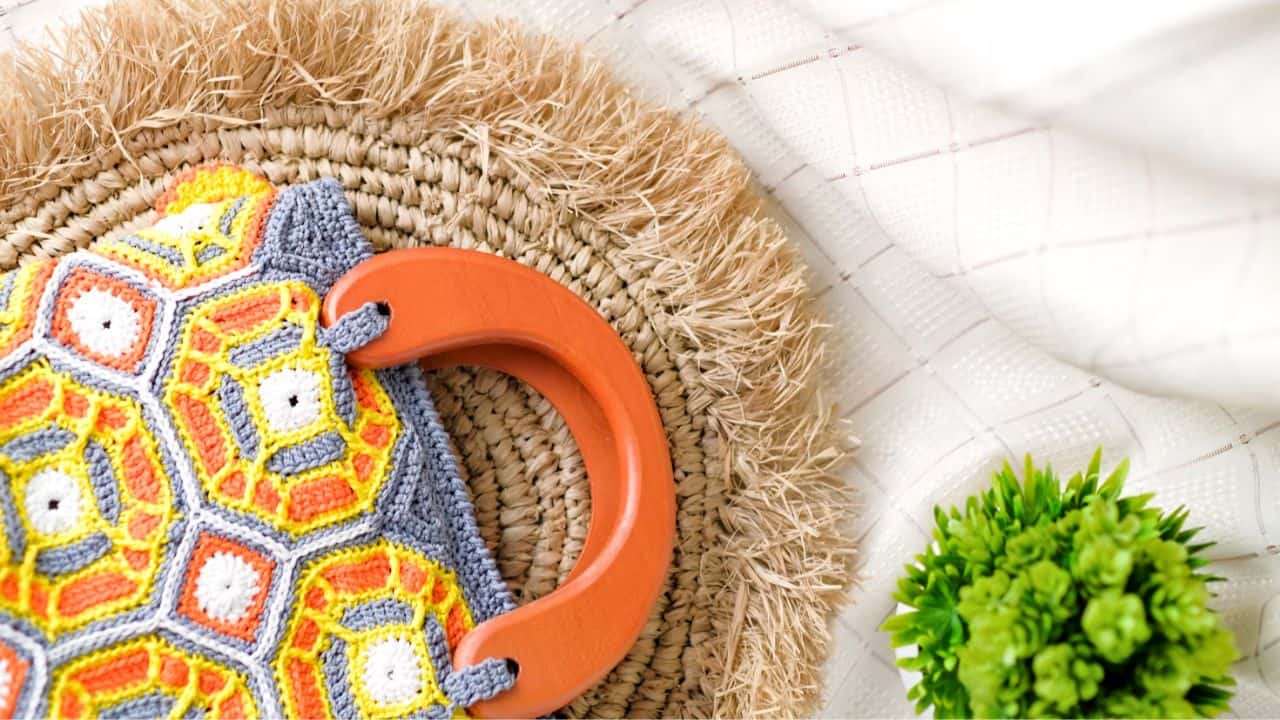‘During the first two weekends of pandemic lockdown I focused entirely on sewing projects. The simple practical tasks soothed and distracted my brain, while the end products have bought much joy.’
Sarah Richards from Fast Fashion Therapy explores the strong link between sewing and positive mental health.
Dr Lucie Whitmore from the Museum of London shared that with me not long after the Government asked us to stay at home to protect lives.
My workshop brand, Fast Fashion Therapy, was created as a response to another overwhelming problem, climate change and the lack of sustainability in the fashion industry.
Not knowing each other, myself and Eleanor Tull, the founders, applied separately to run clothes mending workshops at The Create Place, part of the charity St Margaret’s House in East London.

With time to pause, it is only now we are exploring the therapy element of our name.
On a recent FaceTime chat, we shared what we miss about our workshops.
The respite they offer from feeling completely out of control. Not only in a practical way but in the focus that stitching can provide.
Friend of the workshops, Megan, talked to us about how taking up cross stitching during this period has given her a pattern to follow that is ‘some form of structure in a world without any…whilst stitching is the only thing my brain has space for as I consider where to put the needle next.’
These small coping mechanisms we are finding to look after our mental health and create new areas of focus in our daily lives are tools for practicing mindfulness.

Mindfulness is a total focus on the present moment, a consciousness placed purely on what you are feeling, doing or thinking at that time.
Australian academic and psychologist, Lea Waters points to even the smallest act, like the feeling of washing your hands or noticing the smell of your coffee, as a moment of mindfulness and describes the effect of these actions as ‘giving your brain a gift of an increase in serotonin’.
Focusing on the act of stitching can reveal many different sensations, the texture of the materials, the sound of the thread pulling through the fabric, the scent of a familiar item of clothing in need of mending.
‘It feels wonderful to handle materials while I sorely miss the practical part of my day job, handling historic dress and textiles.’ Lucie goes on to explain.
5 simple tips for living a life less throwaway

Our workshops act as a collaborative space for many different people.
Often participants will talk of how calming simply sitting as a group and hand stitching their damaged clothing can be.
This feeling of calm that comes from sewing is one that motivates groups around the world, either online or in person.
The Sewcialists are an online sewing community that is united by its believe in the positive effects of sewing on your mental health.
The ‘Who We Are’ section of their blog gives equal space to the stories and emotions that inspire the sewing projects as the finished pieces themselves.
“Stitching is like a workout for mind and soul”
Sewing For Positive Mental Health Is Not New
The idea of sewing being a positive hobby for your mental health is not a new concept.
The disabled Soldiers’ Embroidery Industry was set up after World War Two as way for disabled soldiers to find employment.
Ernest Thesiger, who originally set up the organisation, noticed that many soldiers were experimenting with ‘crude’ stitching designs in their hospital beds to pass the time.
By offering them more decorative stitch designs to follow, Thesiger, not only provided a form of employment but also noticed that ‘the work itself affords so much interest that it has a marked effect upon one’s health.’
In a similar vein, charity and social enterprise Fine Cell Work train prisoners to create high quality needlework ‘undertaken in the long hours spent in their cells to foster hope, discipline and self-esteem.’
‘Feelings overflow me, and stitching allows me to unload my heart and soul and help my mind to process my emotions. Stitching is like a workout for mind and soul,’ says Winnie from Fine Cell Work.

Take The Pressure Off
As our repair and upcycling workshops are often aimed at beginner sewers, we place a focus on the doing rather than perfection.
This idea is one that makes even more sense at a time like this.
The internet can be a source of inspiration for creative projects but the sheer volume of posts on social media about coming out of isolation with a new business or having mastered a totally new skill can become demotivating for some.
It’s OK if the thing you create at this time isn’t treasured forever, it’s the act of getting through and surviving that is the most important.
‘However small, pieces inspired by beauty and love can be powerful reminders of just how gorgeous the world can be.
Don’t worry about imperfections either; they’re endearing’ says the Craftivist Collective.
Alyaa, one of our regular workshop attendees got in touch to ask us to arrange an interactive video mending session.
‘We don’t have access to The Create Place sewing equipment, but we’ll have access to each other! The gathering used to motivate me just to turn up with my mending, and since it’s stopped, I’ve stopped too! So having a time where we all just do some companionable co-sewing would be absolutely lovely.’
Even though the conversation naturally turned to the pandemic, with discussion of which type of clothing is best to use to make your own face mask, it’s clear that the practical task of clothes mending and sewing can offer respite from the scale of the problem for a short moment in time.
5 Top Tips For Mindful Clothes Mending
- Try to find a corner of your home to stitch in in that is free from distractions. Finding time to not look at your phone, work emails or to do list will make the process even more rewarding.
- Start with something small. Setting yourself a too big of a challenge may end up being more stressful and leave you wanting to give up.
- Jeans always have a story to tell. Patch a hole and remember what you were doing last time you wore them outside the house. Where will you go in them when social distancing ends?
- Darning takes concentration. Focus on getting the under/over structure of the darn you create to temporarily switch off from the outside world.
- Feel the fibre: During this year’s Fashion Revolution Week, we were asked ‘What’s in my clothes?’ do you know what your favourite items are made of and how they affect the environment? Check the label of your clothes and research the fibre content.
What’s Wrong With Fast Fashion? Our 5 Min Guide Will Catch You Up
Book Your Own Clothing Repair Advice Slot
Have you got items of clothing you’ve been hoping to alter or mend but just need some advice and inspiration to get started?
Join Fast Fashion Therapy for a one-on-one 30 minute advice slot and they can offer advice on the right techniques and materials to use.










